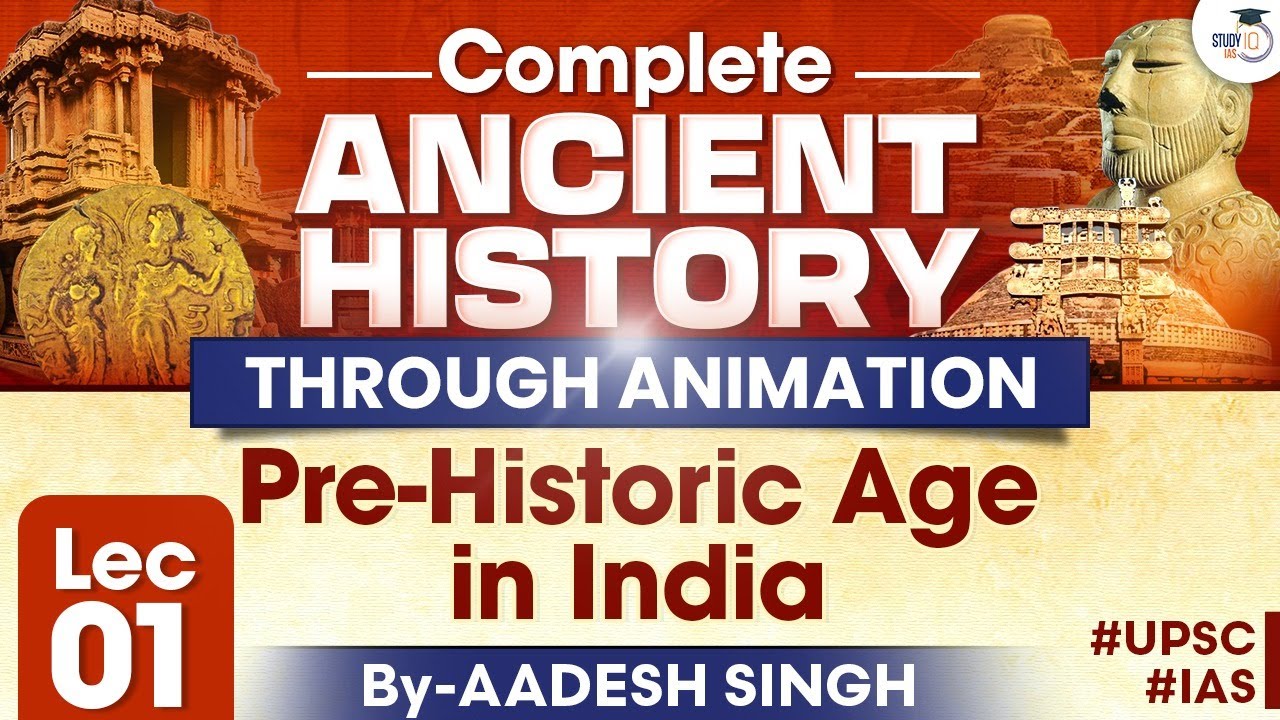STS Lesson #2 with MUKBANG: Early Human History
Summary
TLDRThis educational video script delves into early human history, highlighting the development of technology from the prehistoric age. It discusses the challenges of studying prehistory due to the scarcity of written records and artifacts. The script covers significant discoveries related to human origins, including early hominids like 'Lucy' and later species like Homo habilis and Homo erectus. It also explores the transition from the Paleolithic to the Neolithic era, detailing advancements in tool use, the advent of agriculture, and the domestication of animals. The script concludes with the onset of the Bronze Age, setting the stage for further discussions on human technological progress.
Takeaways
- 🌍 The script discusses early human history and the development of technology during the prehistoric age.
- 🕵️♂️ Studying prehistory is challenging due to the scarcity of written records, limited artifacts, and the need for archaeological methods to interpret findings.
- 🦴 Early hominids, like those discovered by Mary Leakey and Donald Johanson, provided evidence of human-like beings that walked upright.
- 👣 Later hominids left footprints and developed stone tools, indicating a more advanced stage in human evolution.
- 🧠 Homo erectus, known as 'upright man,' had larger brains and were the first to control fire, marking a significant leap in human capabilities.
- 🌐 Homo sapiens, or 'wise man,' emerged with even larger brains and more sophisticated tools, eventually developing language.
- ❄️ During the Ice Age, migration out of Africa occurred via land bridges, leading to the spread of different human groups like Neanderthals and Cro-Magnons.
- 🛠️ The Paleolithic era marked the beginning of technology with the use of stone tools, followed by the use of wood and bones.
- 🌾 The Neolithic era introduced agriculture, which led to the domestication of plants and animals, and the formation of early settlements.
- 🏺 The development of agriculture changed society, leading to the rise of farming societies, increased trade, and the emergence of complex societies with religion and warfare.
- 🏰 The script concludes with a mention of the Bronze Age, hinting at further discussions on the progression of human technology and society.
Q & A
What are the three main difficulties in studying prehistoric information?
-The three main difficulties in studying prehistoric information are: 1) Much of human history remains a mystery because writing has only existed for about five thousand years. 2) There is a scarcity of artifacts from these early cultures. 3) Archaeologists face challenges in dating and analyzing found objects at dig sites.
What is the significance of the discovery of early hominids in East Africa in 1959?
-The discovery in 1959 in East Africa, by Mary Leakey, of skull fragments of a hominid that walked upright marked a significant step in understanding human evolution.
Who discovered 'Lucy' and in which year?
-Donald Johanson discovered 'Lucy', a four-foot-tall hominid that lived 4.5 million years ago, in Ethiopia in 1974.
What are the characteristics of Homo habilis, also known as 'Handyman'?
-Homo habilis, or 'Handyman', had human-like features and was known for making and using crude stone tools.
When did Homo erectus exist and what were their notable traits?
-Homo erectus existed between 1.5 to 2 million years ago in Africa. They had larger brains, were more skillful hunters, and were the first hominids to control fire.
What is the term for the first modern humans and when did they exist?
-The first modern humans are called Homo sapiens, or 'the wise man', and they existed around 200,000 years ago.
How did the Ice Age affect human migration?
-During the Ice Age, which began 1.6 million years ago, changes in climate and the existence of land bridges like Beringia led to the migration of Homo erectus and later Homo sapiens out of Africa.
What were the main technological developments during the Paleolithic era?
-During the Paleolithic era, the first tools were developed using stones, later progressing to the use of wood and bones. They also used nets and traps for fishing, and their clothing and shelters were made from animal skins, wood, bones, and stones.
What is the major development that occurred during the Neolithic era?
-The major development during the Neolithic era was the development of agriculture, which led to the domestication of plants and animals, and the establishment of settlements and societies.
How did the development of agriculture change society during the Neolithic era?
-The development of agriculture in the Neolithic era led to the growth of food sources, the establishment of farming societies, the creation of small settlements, villages, and towns, and an increase in trade, making societies more complex with the emergence of religion and warfare.
What is the significance of the discovery of copper, bronze, and tin in the progression of human technology?
-The discovery of copper, bronze, and tin marked the end of the Stone Age and the beginning of the Bronze Age, which introduced new tools and methods, including the use of metals for creating items and tools.
Outlines

This section is available to paid users only. Please upgrade to access this part.
Upgrade NowMindmap

This section is available to paid users only. Please upgrade to access this part.
Upgrade NowKeywords

This section is available to paid users only. Please upgrade to access this part.
Upgrade NowHighlights

This section is available to paid users only. Please upgrade to access this part.
Upgrade NowTranscripts

This section is available to paid users only. Please upgrade to access this part.
Upgrade NowBrowse More Related Video

sejarah perkembangan agama hindu di dunia

Sejarah Indonesia : Kebudayaan Zaman Pra Aksara

Science, Technology and Society - In the World: Ancient, Middle and Modern Ages

JENIS-JENIS MANUSIA PURBA || SEJARAH INDONESIA KELAS 10 (SEPULUH) #4

Complete History Through Animation | Lec 1 | Pre-Historic Age in India | By Aadesh Singh

Arte na "Pré-História"
5.0 / 5 (0 votes)